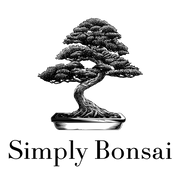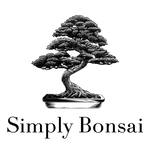Part 3 - Bonsai Placement
Skip to Part 4 of 8 - Watering
Important Section. Reading this is highly recommend!
The vast majority of bonsai species are best grown outside. For some reason, due to misinformation, newcomers to bonsai believe that bonsai are an exception from normal trees and therefore they believe that their bonsai can live inside. That is not the case. Just like an ordinary tree, your bonsai needs sun, air and natural climate cycles.
The exact position of your bonsai tree comes down to the type of tree. If the bonsai is a conifer (pine, juniper, spruce, larch, etc) then it is best placed outside where it will receive full sun. This would be somewhere where your bonsai receives at least 6-8 hours of direct sun each day. Be mindful of bonsai growing in smaller pots as they may dry out if not watered enough on hot summer days.
If the tree is sensitive to full sun (Maples or Azaleas) then the bonsai is best placed in an area that receives morning or late afternoon sun. A place that might be ideal is a patio, under a tree, or anywhere that isn't full sun or full shade.
Beware of strong wind! Don’t keep your bonsai on a high surface where it may be knocked off. Make sure to check the weather forecast daily so you can protect your bonsai against extremes such as hot, cold, & windy conditions. Rather than bringing your bonsai indoors during extreme conditions, place your tree in a sheltered outdoor position like a patio. If your bonsai starts to decline in health, do not bring it inside! Instead, reach out to us or your local bonsai club for assistance.

Indoor & Outdoor Bonsai Explained

Displaying Outdoor Bonsai, Inside
It is great to enjoy your bonsai tree inside from time to time. It is important that you don't do this too frequently though as it will affect the health of your bonsai. Place the bonsai in a relatively well lit area of your home which is near but not in front of a window. For up to 3 days (absolute maximum) you can display your bonsai here. Be sure to check the soil for moisture and you can even mist the foliage. After 3 days, place the bonsai back outside for at least another month or two before being brought back inside. Bonsai are trees after all, and so they enjoy being kept outside for the majority of the time (unless they're an indoor species such as Ficus). Trees that appear weak or sick should not be displayed inside.
Part 4 - Watering


